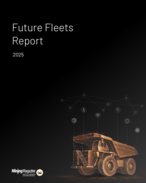In fact, the Ottawa-based resources industry group Natural Resources Canada (NRCan) and its partners the Fuelcell Propulsion Institute (FPI), a Colorado-based advocacy group for fuel cell development, are working on seven projects aimed at bringing fuel cells to underground mining operations.
Among those projects is a fuel cell powered shuttle car for underground coal mines, a fuel cell-battery hybrid powered mine locomotive and a similarly powered underground loader.
The idea of the hydrogen fuel cell is by no means new. Welsh physicist and inventor William Grove came up with the concept in 1838, but only in recent times have practical applications been found for the technology.
To date, one of the problems associated with proton exchange membrane (PEM) hydrogen fuel cells (the most widely developed type and currently the most viable) has been their high manufacturing costs. The upside is they generally are compact, durable and operate at low temperatures.
But hydrogen is also expensive to produce in pure form, and in Australia the primary source of it is coal-fired power stations.
"Most of the larger coal-fired power stations in Australia have hydrogen plants - that is the major production source of hydrogen in the country, because of the amount of energy required to extract it," Queensland Resources Council communications manager Jim Devine told MiningNewsPremium.net.
While cost has been a limiting factor in other mobile equipment applications, underground mining is an application where the technology has added viability.
According to FPI, that's because conventional power technologies such as cable-powered vehicles, diesel, and battery power are not simultaneously clean, safe, and productive.
For instance, FPI said cable vehicles are power-dense and clean, but the cable has safety risks inherent to a trailing cable, which also interferes with mobility and productivity.
The institute said diesel vehicles are more mobile and theoretically more productive, but their compliance with government-mandated emissions controls reduces actual productivity, and even their abated emissions may present a hazard to miners' health.
Apart from improved health and safety through fuel cells having no exhaust emissions or cables, the FPI claims fuel cells also offer lower electrical costs, primarily through savings associated with operating and installing heating, cooling and ventilation systems.
"The big problem with hydrogen of course is - if it's going to have its advantages in ventilation - there also has to be a balancing of its risks in terms of combustibility," Devine said. "And methane, being a primary source of hydrogen, is one of the highest concentrations of hydrogen you're going to get."
Colin Donegan, principal of New South Wales-based specialist coal mining consultancy Colmine, also played down the purported ventilation advantages of fuel cell powered underground equipment.
"You've still got to have ventilation so people can breathe," he told MNP. "The ventilation requirement around a diesel is just increased because you need to dilute the noxious gases."
He said while the reduction in the requirement for extra ventilation due to the elimination of diesel fumes would be limited, there would still be related advantages.
"What would happen is you'd get a convenience of application. There are quite a lot of cases where you have to use a diesel in a dead end, and you have to ventilate the dead end first. There's sometimes only a small amount of work you have to do apart from the ventilation.
"And the total amount of air you're pushing around your mine is as much to dilute methane and keep things cool and comfortable for the underground personnel," Donegan added.
"The diesel exhaust reduction is just one aspect, although the presence or not of diesel is certainly a convenience issue, and would make some jobs easier."
Still, NRCan scientist Dr Marc Betournay remains optimistic.
"My personal dream for mining is to liberate equipment to operate 24-7 where it has to, without compressed air or costly and polluting equipment, with everything operated by expert systems and people on the surface," he said in an NRCan statement. "That is the mine of the future."
























